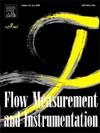Study on the vortex flow field and flow-induced noise characteristics of a submarine steam regulating valve
IF 2.3
3区 工程技术
Q2 ENGINEERING, MECHANICAL
引用次数: 0
Abstract
Steam regulating valve is an important device of regulating steam flow rate and pressure in a submarine steam turbine equipment, and the flow-induced noise caused in regulating process is a dominant factor affecting its regulation performance and even submarine concealment. In this paper, the steam vortex flow field in a submarine steam regulating valve, and the flow-induced noise characteristics affected by the unstable vortex flow were studied. An experimental setup for testing the far-field sound pressure level (SPL) and frequency spectrum of the steam regulating valve under different lifting degrees was built. The RNG k-ε turbulence model was adopted to obtain the steady flow field information, and the large eddy simulation (LES) turbulence method and Ffowcs-Williams and Hawking (FW-H) acoustic model were coupled to simulate the unsteady flow field and flow-induced acoustic characteristics of the steam regulating valve. The coupled numerical method was verified by the noise testing experiment. Correlation between the turbulent kinetic energy and the acoustic power level (APL) in steady state was discussed, and cross-sectional velocity and vorticity distribution characteristics in unsteady state were analyzed under different lifting degrees. Due to the throttling effect at the throat region, a high-velocity steam jetting flow accompanied with shearing vortices was found around the valve spool, especially under a smaller lifting degree. The dynamic evolution of unstable vortex flow on the monitoring cross sections in the conical channel was revealed. The Q criterion was employed to identify the vortex generation and distribution in the steam regulating valve, and the correlation of the peak Q with the pressure variation in the vortex flow field was discussed. The development of the maximum SPL with the maximum cross-sectional vorticity for various lifting degrees was determined by linear fitting. The far-field SPL directivity and 1/3 octave frequency spectrum characteristics for various lifting degrees were analyzed. Results showed that the SPL presented more asymmetrical distribution at a smaller noise monitoring circle around the steam regulating valve even under a greater lifting degree. And a higher SPL was often accompanied with a greater decay rate in frequency spectrum.
求助全文
约1分钟内获得全文
求助全文
来源期刊

Flow Measurement and Instrumentation
工程技术-工程:机械
CiteScore
4.30
自引率
13.60%
发文量
123
审稿时长
6 months
期刊介绍:
Flow Measurement and Instrumentation is dedicated to disseminating the latest research results on all aspects of flow measurement, in both closed conduits and open channels. The design of flow measurement systems involves a wide variety of multidisciplinary activities including modelling the flow sensor, the fluid flow and the sensor/fluid interactions through the use of computation techniques; the development of advanced transducer systems and their associated signal processing and the laboratory and field assessment of the overall system under ideal and disturbed conditions.
FMI is the essential forum for critical information exchange, and contributions are particularly encouraged in the following areas of interest:
Modelling: the application of mathematical and computational modelling to the interaction of fluid dynamics with flowmeters, including flowmeter behaviour, improved flowmeter design and installation problems. Application of CAD/CAE techniques to flowmeter modelling are eligible.
Design and development: the detailed design of the flowmeter head and/or signal processing aspects of novel flowmeters. Emphasis is given to papers identifying new sensor configurations, multisensor flow measurement systems, non-intrusive flow metering techniques and the application of microelectronic techniques in smart or intelligent systems.
Calibration techniques: including descriptions of new or existing calibration facilities and techniques, calibration data from different flowmeter types, and calibration intercomparison data from different laboratories.
Installation effect data: dealing with the effects of non-ideal flow conditions on flowmeters. Papers combining a theoretical understanding of flowmeter behaviour with experimental work are particularly welcome.
 求助内容:
求助内容: 应助结果提醒方式:
应助结果提醒方式:


